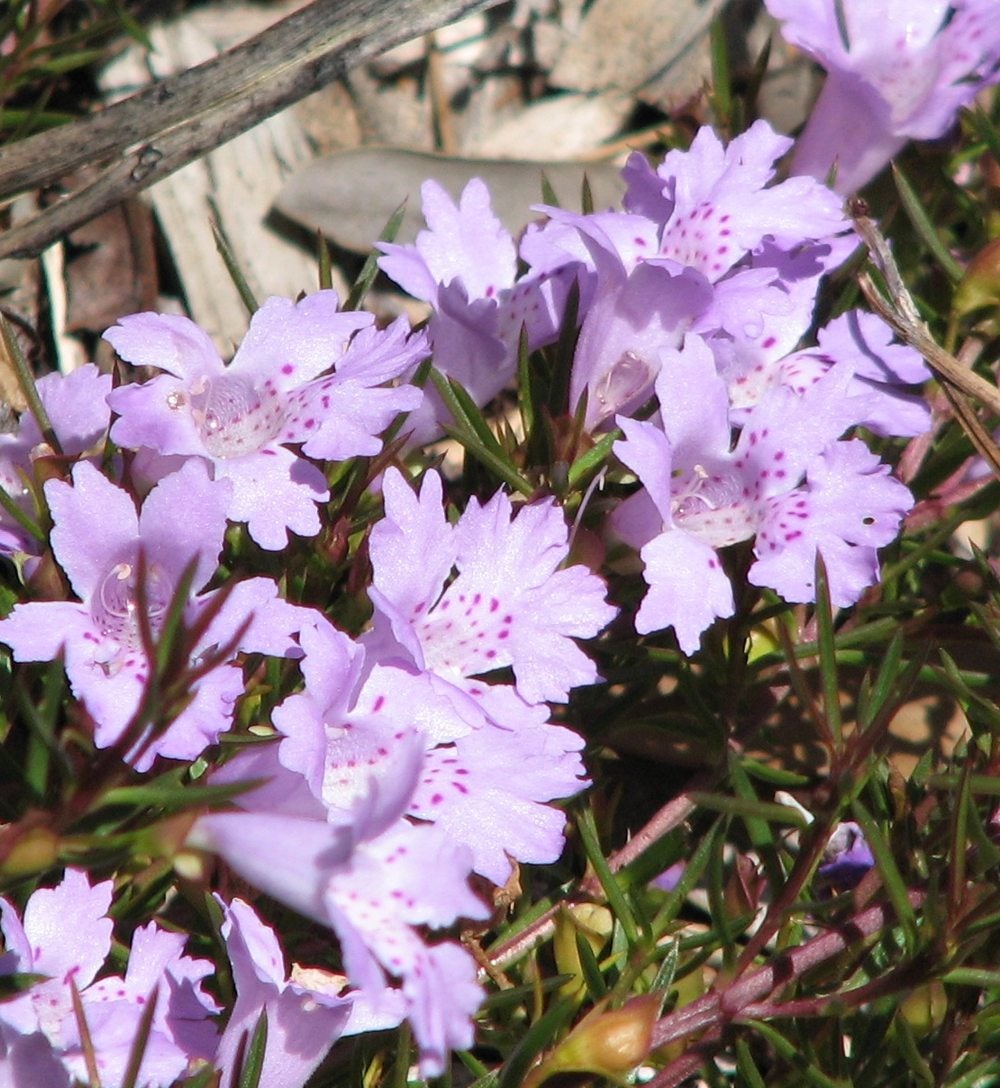What Is A Snakebush: Information About Snakebush Ground Cover


If “snakebush” makes you think of a long, scaly vine, you’re in for a surprise. According to snakebush plant information, this lovely, little plant offers delicate, mauve flowers that look wonderful in hanging baskets. So exactly what is a snakebush? Read on for tips on growing snakebush plants.
What is a Snakebush Plant?
Native to Western Australia, snakebush bears the scientific name of Hemiandra pungens, and it’s also known as the snake plant. But the only thing snake-like about it is how it stays very close to the ground. Snakebush plant information tells you that this tiny plant offers dense, pointed foliage that looks like needles. Its mauve or light purple flowers arrive in spring and last much of the summer. The flowers grow in tube shapes. Each blossoms has an upper “lip” with two lobes and a lower “lip” with three and carry a sweet fragrance.
Growing Snakebush Plants
Since snakebush is dense, and prostrate, it makes an excellent ground cover. Snakebush ground cover has the added advantage of being drought-resistant when mature. You’ll need a sunny location to make this plant happy. Growing snakebush plants is easier in well-drained soil, but the plants will also survive in sites with poor drainage. On the other hand, you may have a hard time finding the seeds in commerce. You can grow snakebush by taking cuttings from a friend’s garden. Growing snakebush is fairly easy from cuttings.
Care of Snakebush
Once you’re able to acquire the snakebush, you’ll find that you won’t have much to do if you plant it in the right location. It is both drought- and frost-tolerant. Snakebush ground cover accepts temperatures down to 25 degrees Fahrenheit (-4 C.) without any damage. You’ll have a better experience growing snakebush plants if you live in a dry climate. Those gardeners in regions with hot, wet summer will have the hardest time. Care of snakebush plants in humid areas is difficult and the species cannot be grown reliably. It works well as part of a low-maintenance backyard, beside the swimming pool or a courtyard garden. If you are putting in a cottage or flower garden, include snakebush in the mix.
Gardening tips, videos, info and more delivered right to your inbox!
Sign up for the Gardening Know How newsletter today and receive a free copy of our e-book "How to Grow Delicious Tomatoes".

Teo Spengler is a master gardener and a docent at the San Francisco Botanical Garden, where she hosts public tours. She has studied horticulture and written about nature, trees, plants, and gardening for more than two decades. Her extended family includes some 30 houseplants and hundreds of outdoor plants, including 250 trees, which are her main passion. Spengler currently splits her life between San Francisco and the French Basque Country, though she was raised in Alaska, giving her experience of gardening in a range of climates.
-
 Terrifically Tubular Flowers For Hummingbirds: 9 Tube-Flowered Plants To Attract Hummers
Terrifically Tubular Flowers For Hummingbirds: 9 Tube-Flowered Plants To Attract HummersGrowing tubular flowers for hummingbirds helps you create the optimum feeding conditions for your winged friends. Here are nine tubed delights for hummers
By Tonya Barnett
-
 How To Grow Hydroponic Tomatoes For Fresh Indoor Harvests – No Soil Required
How To Grow Hydroponic Tomatoes For Fresh Indoor Harvests – No Soil RequiredLearning how to grow tomatoes in water is easy and allows you to harvest fresh-home-grown produce in every season without any mess.
By Ellen Wells